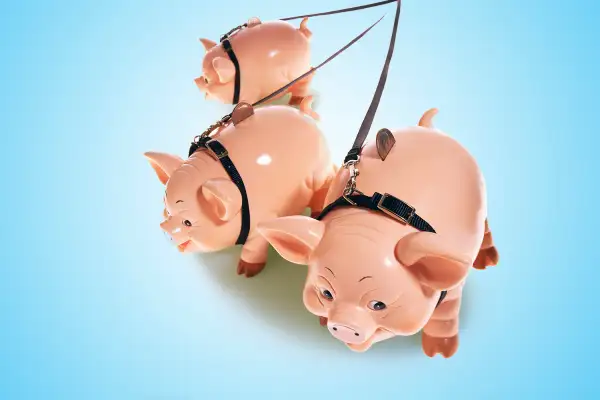My Kid Loves to Spend. Here's How I'm Dealing With It

It’s all very well to give kids an allowance, and teach them to set aside some of that money to save—and also to give to charitable causes.
The bigger challenge, as I’m discovering, is teaching your kid how to spend money: How to shop sensibly for the (many, many) things he or she wants. And they want plenty. According to research conducted by local parents everywhere, kids start wanting stuff from the time they can point and whine, usually starting at about 10 months in the grocery store.
Fortunately, it takes them a while to discover—never mind understand—that the toy they are screaming for in the aisles of Price Chopper requires the time-honored exchange of scrip for goods. But once they put two and two together (“I have cash, ergo I can spend it”), you’ve got a little consumer on your hands.
And you have to train them.
Your child’s financial style
Silly me, I thought this was going to be the easy part. Let’s assume your child is diligently (more or less) saving some of their allowance/birthday/holiday/babysitting cash—and setting aside some to give away, through the family plan or their school or whatever. In theory, the rest is theirs to spend. Right?
Not so fast. Just as you have your own spending style, so does your child. And, similar to having a knack for karate or gymnastics, certain financial tendencies emerge early on.
My son, age 9, is an impulse shopper.
Thanks to my stealth observations of my kid and his money, I’ve learned that he doesn’t mind saving, if you make him do it. But alas, he looooooves to spend. You know the old saying, “A penny saved is a penny earned?” Someday my kid will own a t-shirt that says: “A dollar saved is sadder than a dollar spent.”
When the urge to splurge emerges
At first, I tried to put a positive spin on his spendy tendencies: “It’s so cute that he wants another Nerf gun!” “Wow, not many kids ask where they can buy a Porsche!”
Then I got worried. You know how you watch your children, hoping to see evidence that the DNA fairy is on your side: he got your husband’s knack with people, Grandma’s musical skill, etc.? You also keep vigil, hoping that none of your worst traits appear. And given that my husband and his family are eminently practical with money—and mine isn’t—I think the DNA fairy let me down.
The tipping point occurred just recently:
- One morning before school, he asked if he could borrow my Chase Sapphire card. I said no.
- The other day he took three of his friends to a local bakery and gave them $5 each to buy whatever they wanted. It’s not a round of beers, but still.
- We discovered an unused Amazon gift card, and he worked himself into a lather one night because he couldn’t find anything he wanted to buy.
The ghost of credit cards to come
That last incident did it. I had to intervene. I saw the specter of myself at 24 with my first credit card, the gateway drug to a mountain of debt later on. And I realized that just as we taught our son to say please and thank you and to clear his plate from the table, we had to teach him how to spend.
So I took the laptop away from him, amid agitated protests of: “But I want to BUY something!” And I explained:
- You don’t look for things to buy. You think about what you want, and then you shop.
- Shopping takes time. You need to think about whether Item X is the right thing. Sleeping on it is a good way to clarify whether you really want Item X or you might want to look for Item Y.
- Your brain likes to spend.
I spent the most time on this last point. There aren’t any picture books about behavioral economics, but maybe there should be, given that almost every experience on every device drives your child to a purchase funnel. So I did my best to translate one of the basic behavioral finance concepts for my nine-year-old.
“How does it feel when you buy something?” I asked.
He thought about it while rolling around on the floor, the boy’s version of listening. “Exciting,” he said.
“Right. Because when you think about buying something, there are chemicals in your brain pinging around, like that pinball machine you were on the other day.”
I definitely got his attention with the pinball reference. “Those chemicals feel good,” I continued. “It’s exciting to think about having this new thing you want. But that’s not a reason to actually buy something.”
My son squirmed around some more. Thoughtfully, it seemed to me.
Did my behavioral economics tutorial have any impact? It’s hard to say. My son did wait a couple of days without buying anything. Then, when he was on an errand with a friend’s family in Target, he found the Nerf gun of his dreams, within his budget, and bought it.
The last thing he needs is another Nerf gun, let me tell you. But I’ll save the lesson about how we tend to buy repeats of stuff we already own for another time.